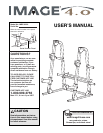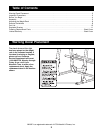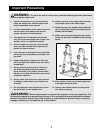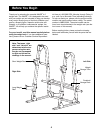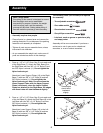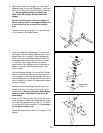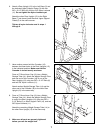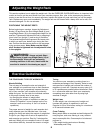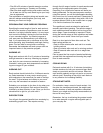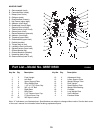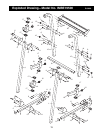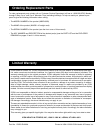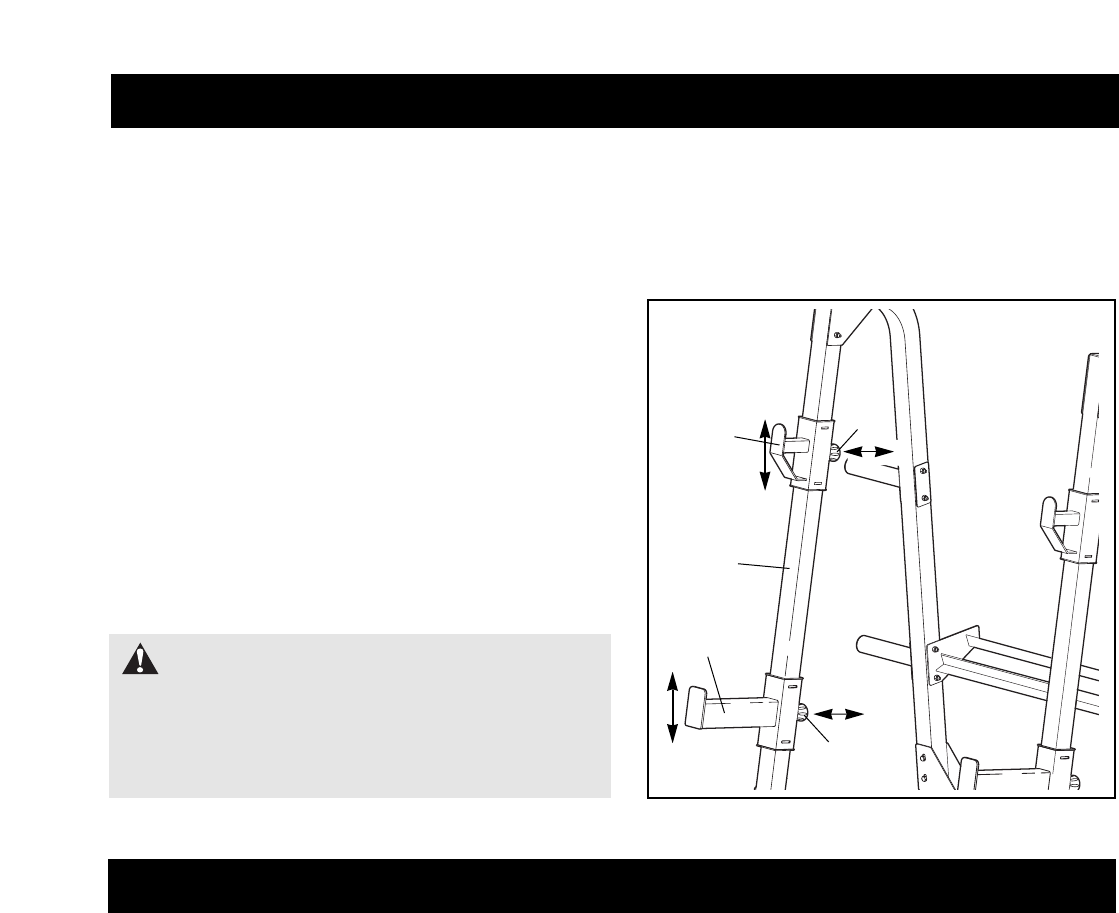
THE FOUR BASIC TYPES OF WORKOUTS
Muscle Building
The only way to increase the size and strength of
your muscles is to push them close to their maximum
capacity. When you progressively increase the inten-
sity of your exercise, your muscles will continually
adapt and grow. You can tailor the individual exercise
to the proper intensity level in two ways:
¥ by changing the amount of weight used
¥ by changing the number of repetitions or sets per-
formed (A ÒrepetitionÓ is one complete cycle of an
exercise, such as one sit-up. A ÒsetÓ is a series of
repetitions).
The proper amount of weight for each exercise obvi-
ously depends upon the individual user. You must
gauge your limits and select the amount of weight that
is right for you. Begin with 3 sets of 8 repetitions for
each exercise you perform. Rest for 3 minutes after
each set. When you can complete 3 sets of 12 repeti-
tions without difficulty, increase the amount of weight.
Toning
You can tone your muscles by pushing them to a
moderate percentage of their capacity. Select a mod-
erate amount of weight and increase the number of
repetitions in each set. Complete as many sets of 15
to 20 repetitions as possible without discomfort. Rest
for 1 minute after each set. Work your muscles by
completing more sets rather than by using high
amounts of weight.
Weight Loss
To lose weight, use a low amount of weight and
increase the number of repetitions in each set.
Exercise for 20 to 30 minutes, resting for a maximum
of 30 seconds between sets.
Cross Training
Many people desire a complete and well-balanced fit-
ness program, and cross training is a very efficient
way to accomplish this. One example of a balanced
program is:
¥ Plan weight training workouts on Monday,
Wednesday and Friday.
Exercise Guidelines
8
POSITIONING THE WEIGHT RESTS
Before beginning an exercise, loosen the Adjustment
Knobs (12) and move the Short Weight Rests (4) and
Long Weight Rests (19) to the appropriate height for the
exercise. Tighten each Adjustment Knob by snapping it
into a hole in an Upright (1) and turning it clockwise.
The selected height should represent the lowest point
to which you want your barbell to go during the exer-
cise. Perform the exercise as shown on the accompa-
nying exercise poster. Note: Make sure the Adjust-
ment Knobs are tightened into the adjustment holes
in the uprights.
12
12
4
1
19
This section explains how to adjust the weight rack. See the EXERCISE GUIDELINES below, for important infor-
mation on how to get the most benefit from your exercise program. Also, refer to the accompanying exercise
poster to see the correct form for several exercises. Inspect and tighten all parts each time you use the weight
rack. Replace any worn parts immediately. The weight rack can be cleaned with a damp cloth and a mild, non-
abrasive detergent. Do not use solvents.
Adjusting the Weight Rack
WARNING: Always set both Short
Weight Rests (4) and Long Weight Rests (19) at
the same height. When you are performing
standing exercises in the rack, stand inside the
area that is shaded in the drawing on page 3.



